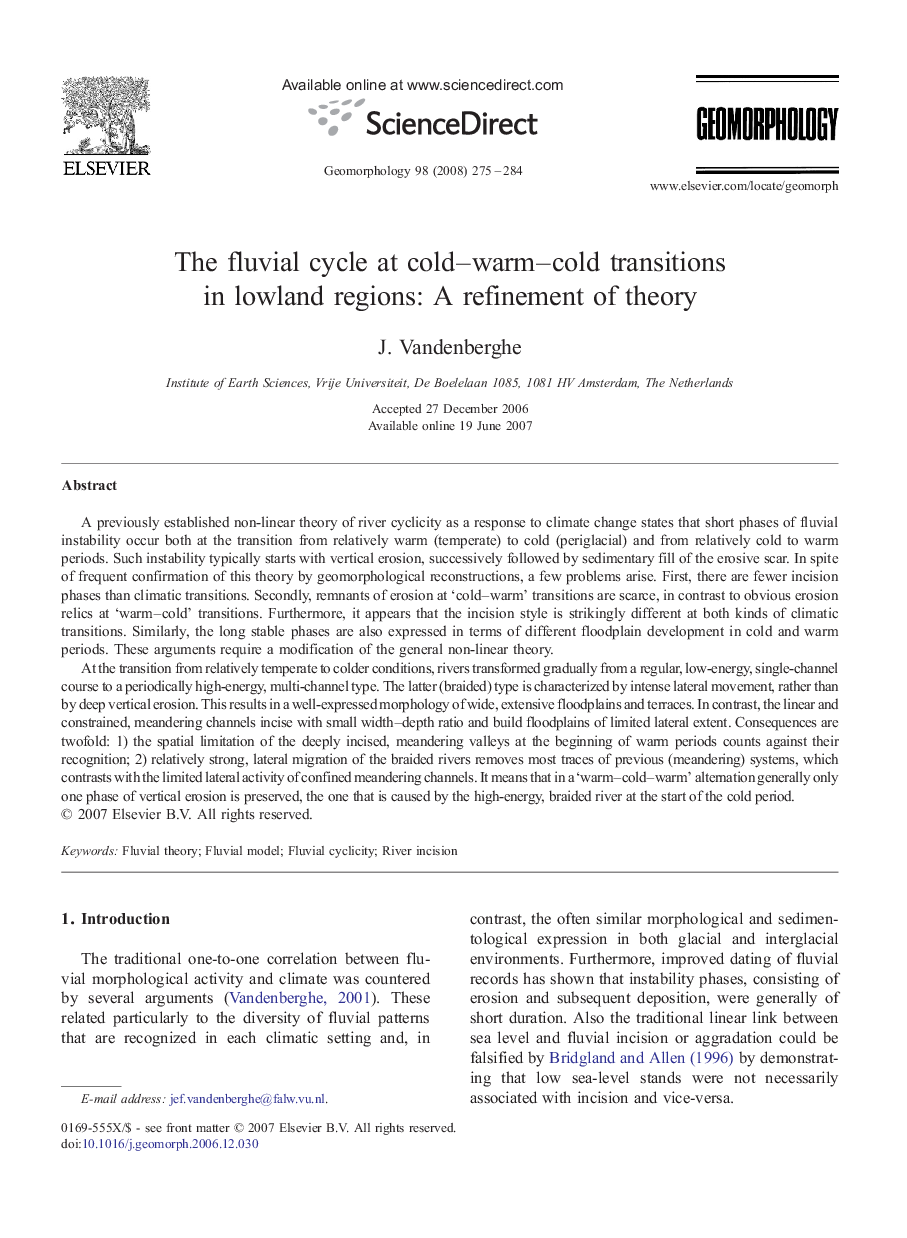| Article ID | Journal | Published Year | Pages | File Type |
|---|---|---|---|---|
| 4686657 | Geomorphology | 2008 | 10 Pages |
Abstract
At the transition from relatively temperate to colder conditions, rivers transformed gradually from a regular, low-energy, single-channel course to a periodically high-energy, multi-channel type. The latter (braided) type is characterized by intense lateral movement, rather than by deep vertical erosion. This results in a well-expressed morphology of wide, extensive floodplains and terraces. In contrast, the linear and constrained, meandering channels incise with small width-depth ratio and build floodplains of limited lateral extent. Consequences are twofold: 1) the spatial limitation of the deeply incised, meandering valleys at the beginning of warm periods counts against their recognition; 2) relatively strong, lateral migration of the braided rivers removes most traces of previous (meandering) systems, which contrasts with the limited lateral activity of confined meandering channels. It means that in a 'warm-cold-warm' alternation generally only one phase of vertical erosion is preserved, the one that is caused by the high-energy, braided river at the start of the cold period.
Keywords
Related Topics
Physical Sciences and Engineering
Earth and Planetary Sciences
Earth-Surface Processes
Authors
J. Vandenberghe,
